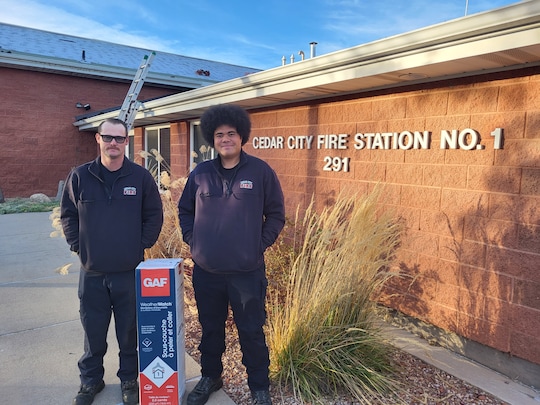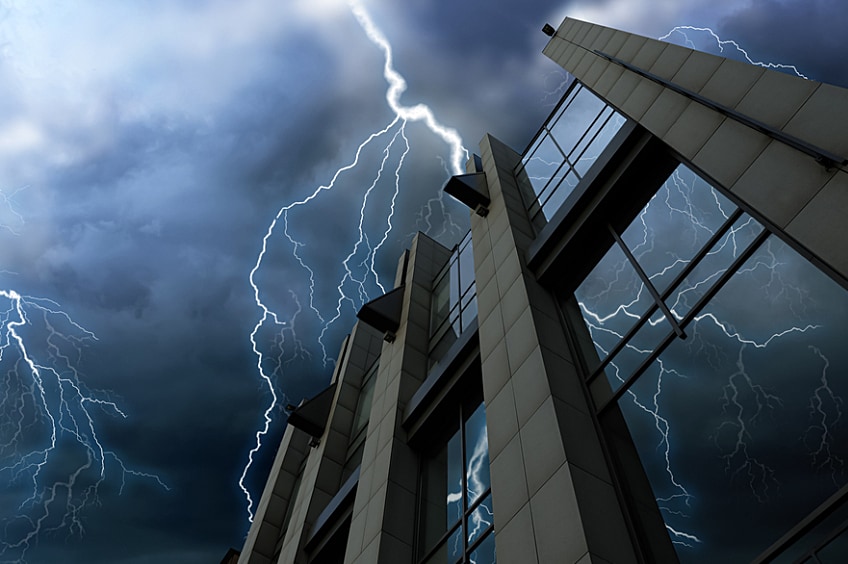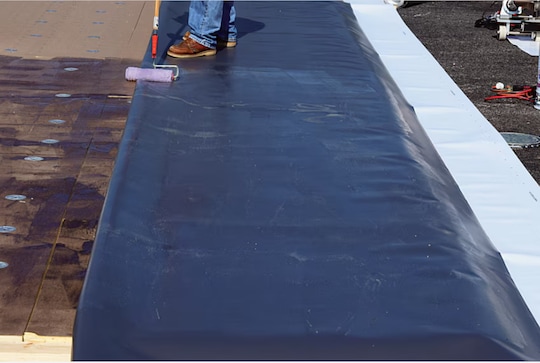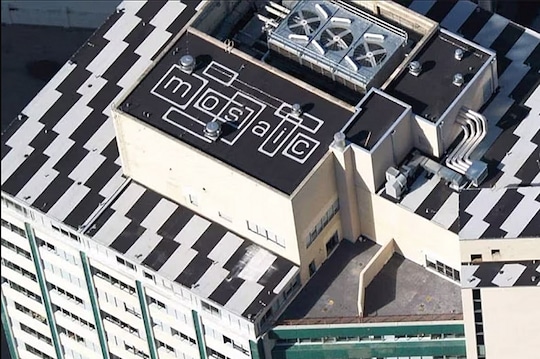
As one of nature's most powerful forces, lightning can cause severe damage. Each strike has the potential to cause fires, wreck electrical systems, weaken built structures, and significantly impact roofs.
According to the U.S. Centers for Disease Control and Prevention, approximately 40 million lightning strikes occur nationwide every year, delivering 300 million volts and 30,000 amps. The related expense of this adds up fast; the Insurance Information Institute reports that lightning-related damage costs more than a billion of dollars in insurance claims annually.
Commercial property owners should be made aware of the benefits that lightning protection for buildings can offer. Encouraging your clients to install an effective lightning protection system can help address this threat while positioning you as a trusted partner.
Here's what you need to know about lightning protection for buildings, the systems, and the ways they can work in harmony with commercial roofs.
What Are Lightning Protection Systems?
Lightning protection systems help mitigate the risk of a lightning strike by capturing or intercepting its energy and safely deflecting power surges into the ground instead of inside a building or electrical system. Because lightning generates heat, the protection system works to minimize the impact so building components won't melt or catch on fire.
How Do They Work?
Lightning protection systems include a strike termination device or strike point that is either a single, round-tipped metal Franklin rod—also known as an air terminal or lightning rod—located at the building's highest point, or a Faraday cage consisting of multiple rods and a series of cables that form a mesh over the top of a structure. Accordingly, this latter option is better suited to larger buildings.
Main conductor cables that lead lighting to grounding terminals are made of multi-strand copper or aluminum to ensure optimal conductivity, durability, and compatibility needed for commercial roofs. These conduction lines are buried in the ground, their gauge depends on the building's height. Once installed, the cables can safely direct up to three million volts of lightning into the ground.
Bonds or fittings are used to connect all metal parts and form a continuous system that prevents electric arcs. At the same time, surge protectors divert excess voltage, so it doesn't spread into the building. Solid grounding rods, plates, or cable grids help conduct and disperse the energy into the ground.
How Are They Installed?
Oftentimes, grounding infrastructure must be installed at the same time as building foundations, with final connections secured after all other building systems are up and running.
Some lightning protection systems also offer custom elements to meet a building's specific risk requirements, such as electrolytic rods going into the ground, or active soil moisture replenishment. For larger buildings that need wider coverage, a special system can be designed to feature multiple strike termination devices; usually, they're 10 inches high and 20 feet apart, so they can efficiently protect the entire structure.
Adhering to Building Code Compliance
When designing and installing lightning protection for buildings, especially for a commercial structure, it's important to follow local building codes and lightning protection standards. While these systems are not mandated in the United States, most commercial building owners opt to install systems with the aim of protecting their properties and sensitive electronic equipment.
Contractors can find official guidance regarding components and best practices from sources including the Underwriters Laboratories, the National Fire Protection Association, and the Lightning Protection Institute. Lightning protection systems must be certified right after installation, and five years later.
Best Practices for Commercial Roof Lightning Protection Installation
Roofing systems and lightning protection systems can impact one another, so it's important to be aware of how roofing materials may affect combustibility. For example, conductors must be used to bond metal components and rooftop equipment to ground them. To prevent galvanic action with roofing materials and flashings, it's best to use copper components with copper roofs and aluminum parts for steel or aluminum roofs.
Installing GAF EnergyGuard™ Barrier Polyiso Insulation, which is made of coated glass-fiber bonded to a core of isocyanurate foam, can help protect commercial buildings. This material achieves an ANSI UL790 roof rating over combustible wood decks with a half-inch board thickness, making it a good product to include on commercial roofs.
Ultimately, it's recommended that roofing professionals consult electricians who specialize in lightning protection systems to make sure both systems are compatible before the job begins. Otherwise, problems can arise such as bitumen damage, surface abrasion, and metal degradation, among other changes. Knowing where lightning protection components will be located is important, too.
Protecting Your Clients and Bolstering Your Reputation
Commercial building owners can enjoy peace of mind knowing their assets are fortified against lightning strikes, which can quickly damage or wipe out a business. You can play a role in helping them rest assured that their property is protected from one of nature's strongest forces, all while growing your business and enhancing your professional reputation.
GAF solutions can help commercial roofing professionals deliver exceptional service and safety to their clients, along with valuable advice and guidance. Interested in learning more about roofing materials that can support lightning protection for buildings? Explore the GAF Building Owner Roof Resources webpage.



